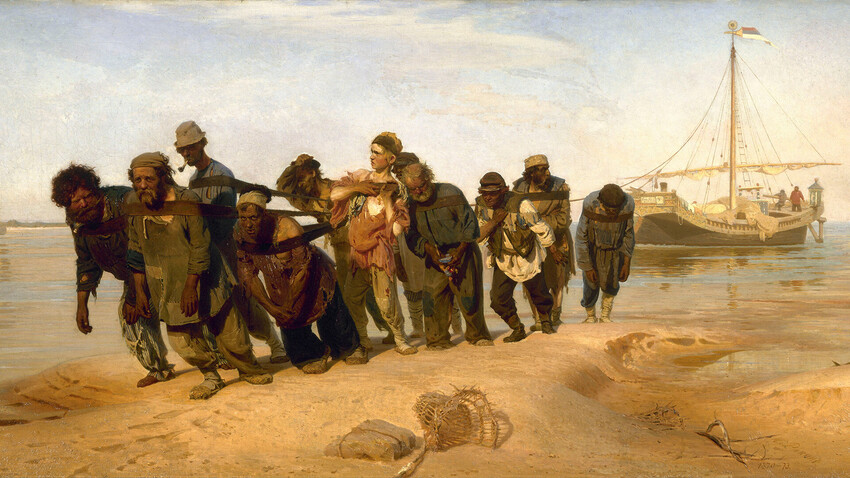
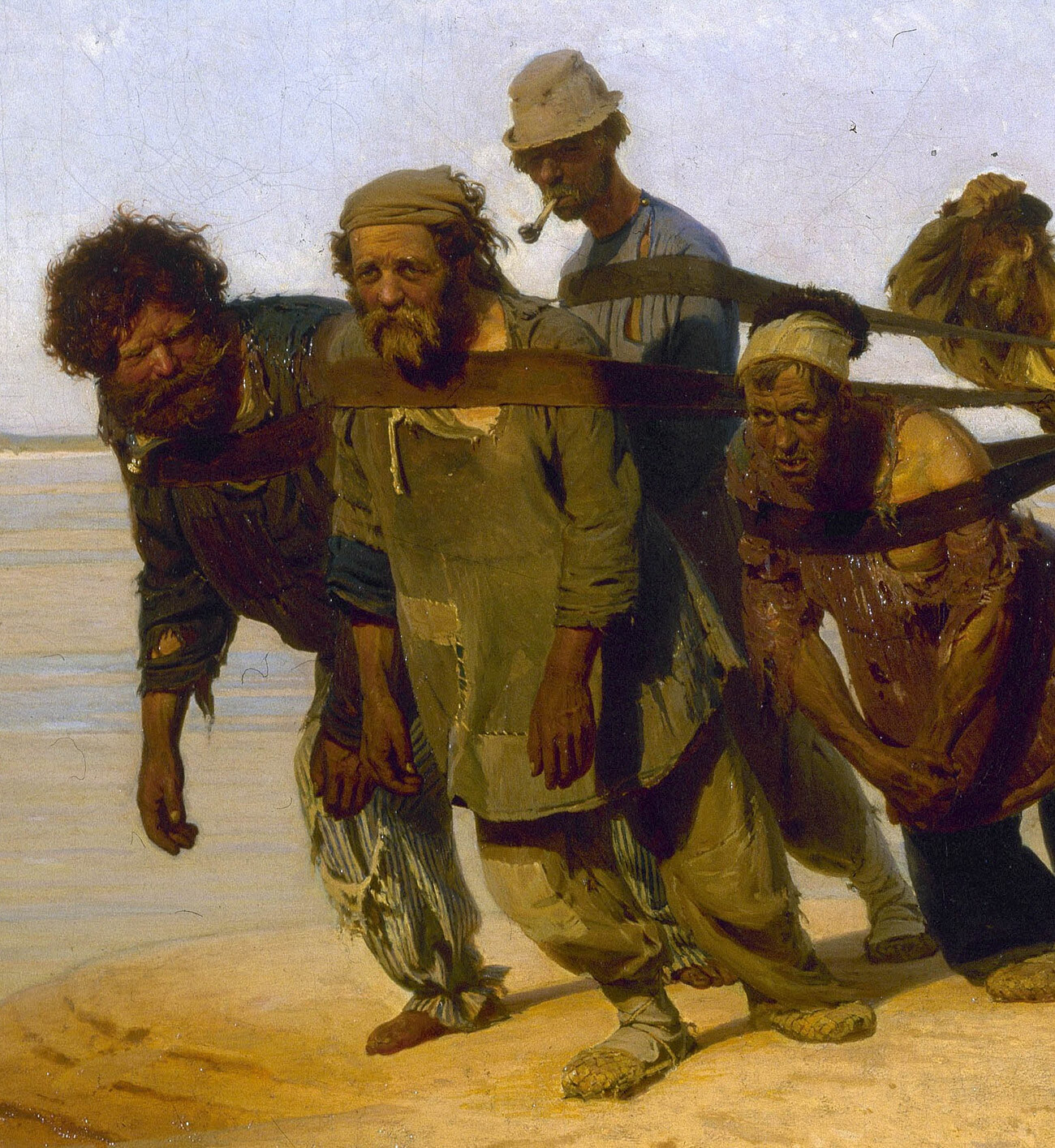
All the noise was because of the plot: ragged, exhausted barge haulers pulling a barge along the Volga bank. A brand new tugboat can be seen in the distant background - as a mockery of the incredible efforts these are making to pull the vessel along the river.
Barge haulers steered ships against the flow of the river. Their labor was used, for example, where it was impossible for draft animals to pass. Having gathered in an artel, the barge haulers would walk along the coastal strip and pull the ship by a cable. They were recruited at the rate of eight legs - a thousand ‘poods’. That is, four people pulled 16.38 tons!
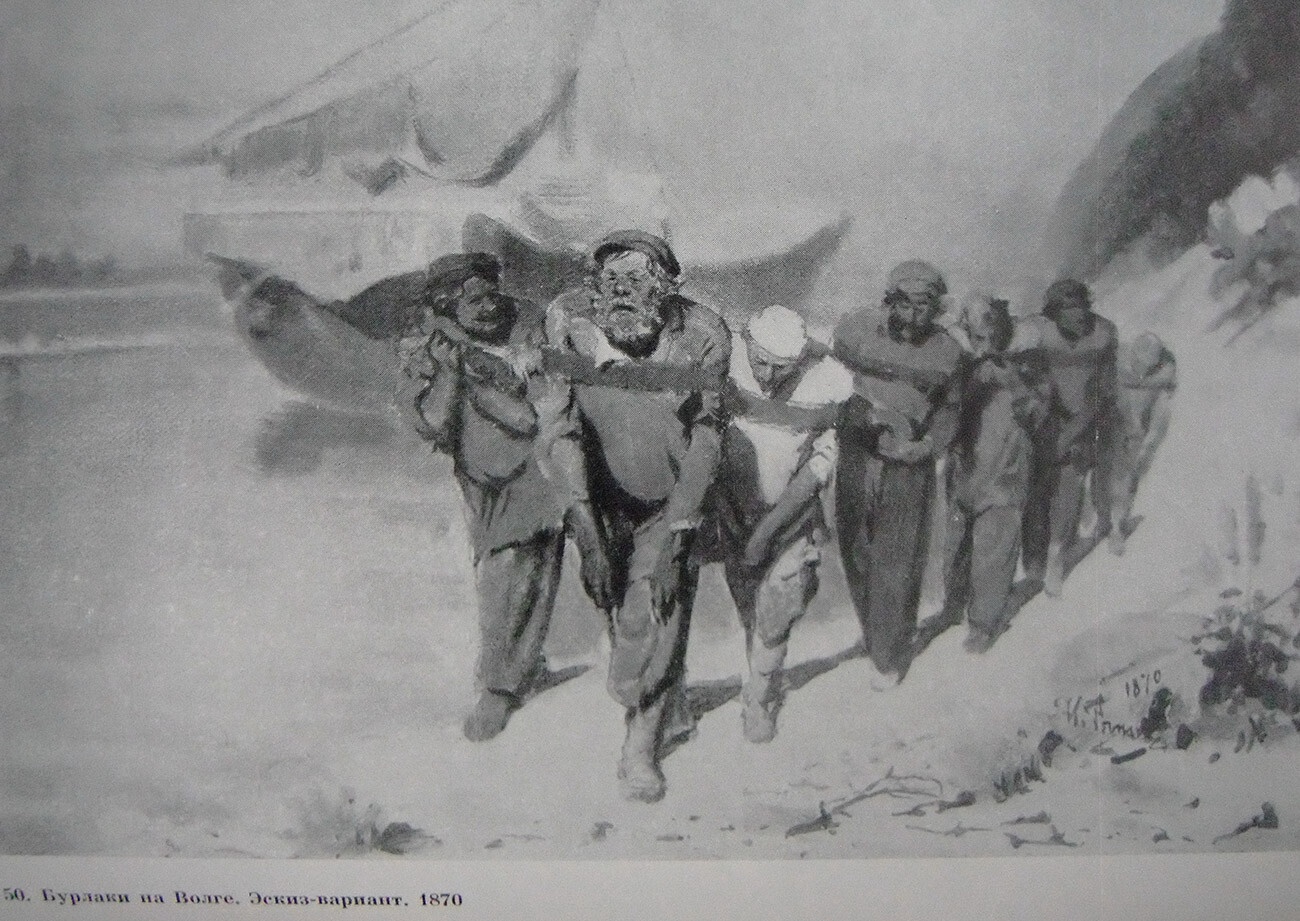
How did it happen that Repin decided to turn to this plot? As a student at the Academy of Arts, he went on a steamer to sketch in Ust-Izhora. And there, he saw the ‘burlaks’. Against the backdrop of the resting public, they looked, to put it mildly, a little wild, looking gloomy. The young artist was struck by the contrast and immediately decided to paint a picture. On the advice of a friend, he went on a trip along the Volga, where he made sketches for the canvas, communicated with ‘burlaks’ and watched their work.
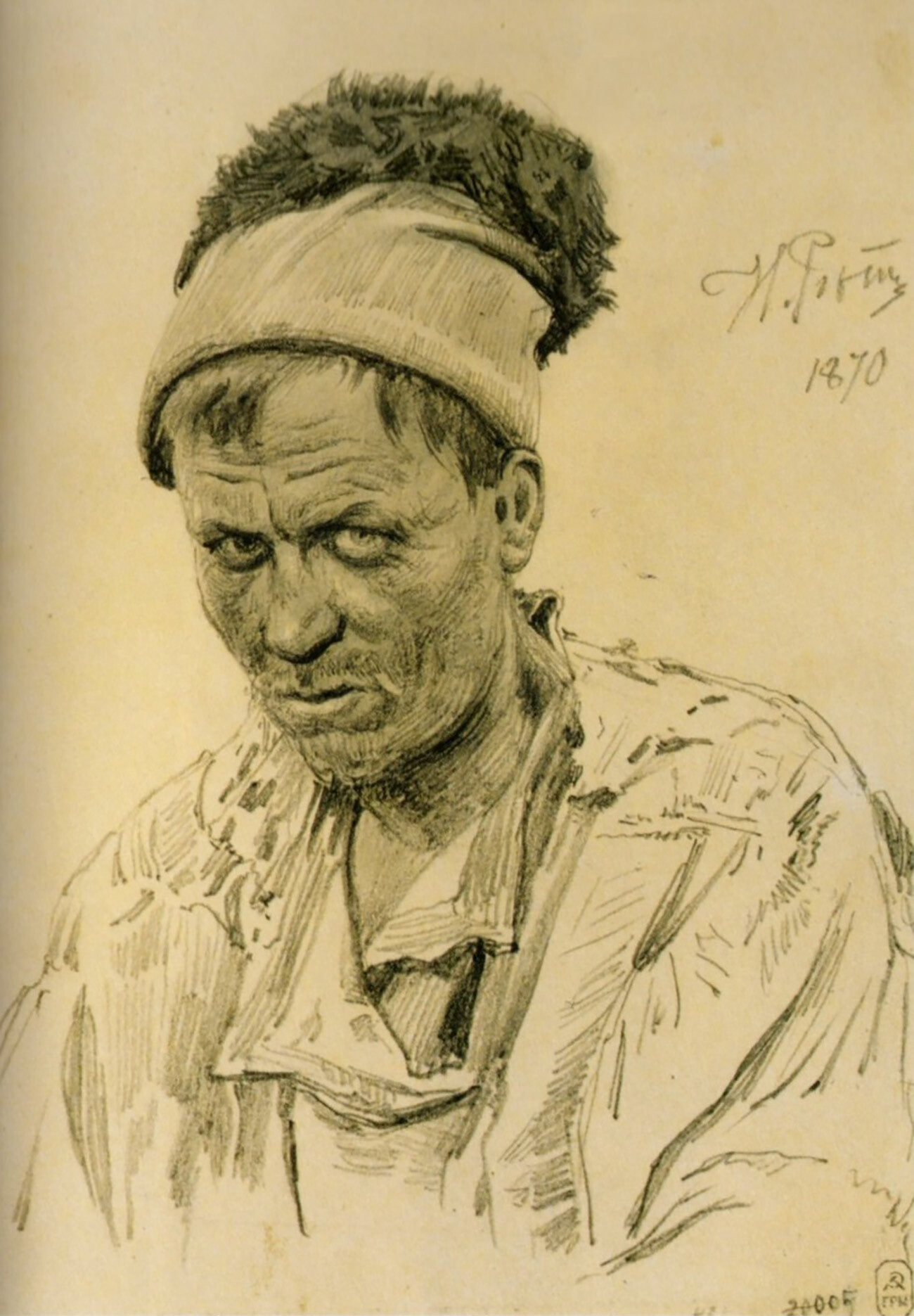
Ilya Repin honestly admitted that, first of all, he was interested in external contrast. “I must confess frankly that I was not at all concerned with the question of life and social structure of the contracts between barge haulers and their owners; I asked them only to give some seriousness to their cause. What are all the novels and all the histories before this figure! My God, how marvelously his head is tied up with a rag, how his hair has curled up to his neck, and the main thing is the color of his face!” he recounted in his memoirs.

The effect exceeded all expectations: the artist was both criticized and praised for his realism. There was a buyer for the painting and what a buyer - none other than Grand Duke Vladimir Alexandrovich himself bought it for 3,000 rubles and placed it in the billiard room of the Vladimir Palace. And he happily told guests about the characters in the painting, enjoying the effect produced.
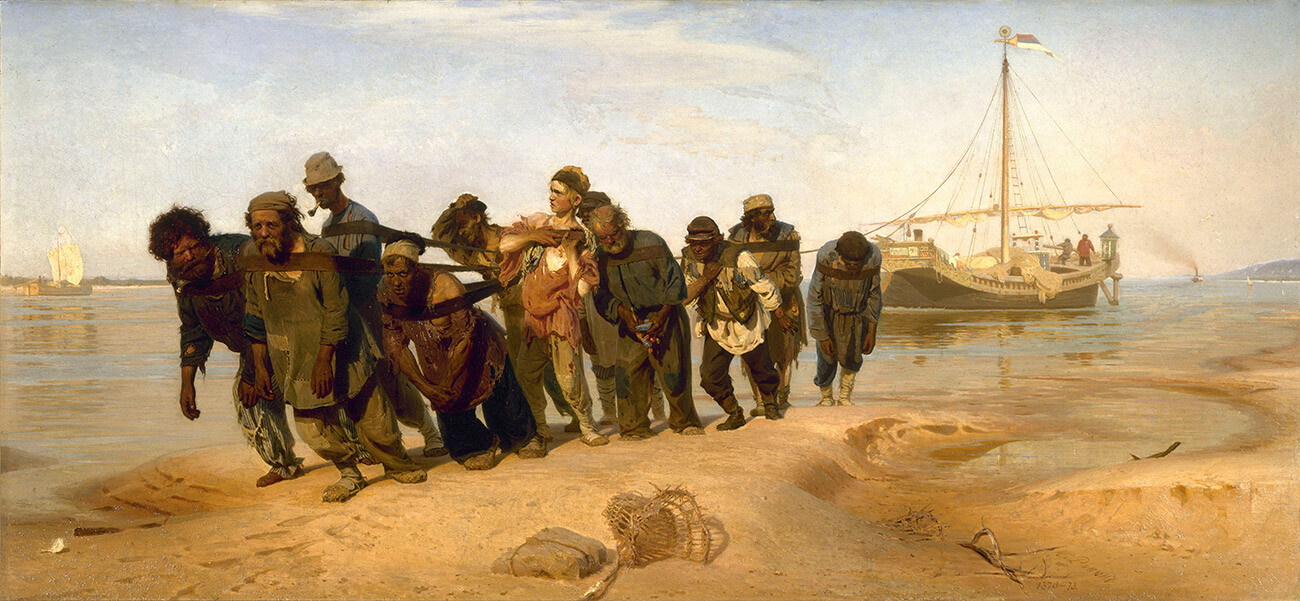
Until 1918, ‘Barge haulers’ remained in the Grand Duke's mansion and then, it was transferred to the Russian Museum, where it is located to this day.
Dear readers,
Our website and social media accounts are under threat of being restricted or banned, due to the current circumstances. So, to keep up with our latest content, simply do the following:
If using any of Russia Beyond's content, partly or in full, always provide an active hyperlink to the original material.
Subscribe
to our newsletter!
Get the week's best stories straight to your inbox